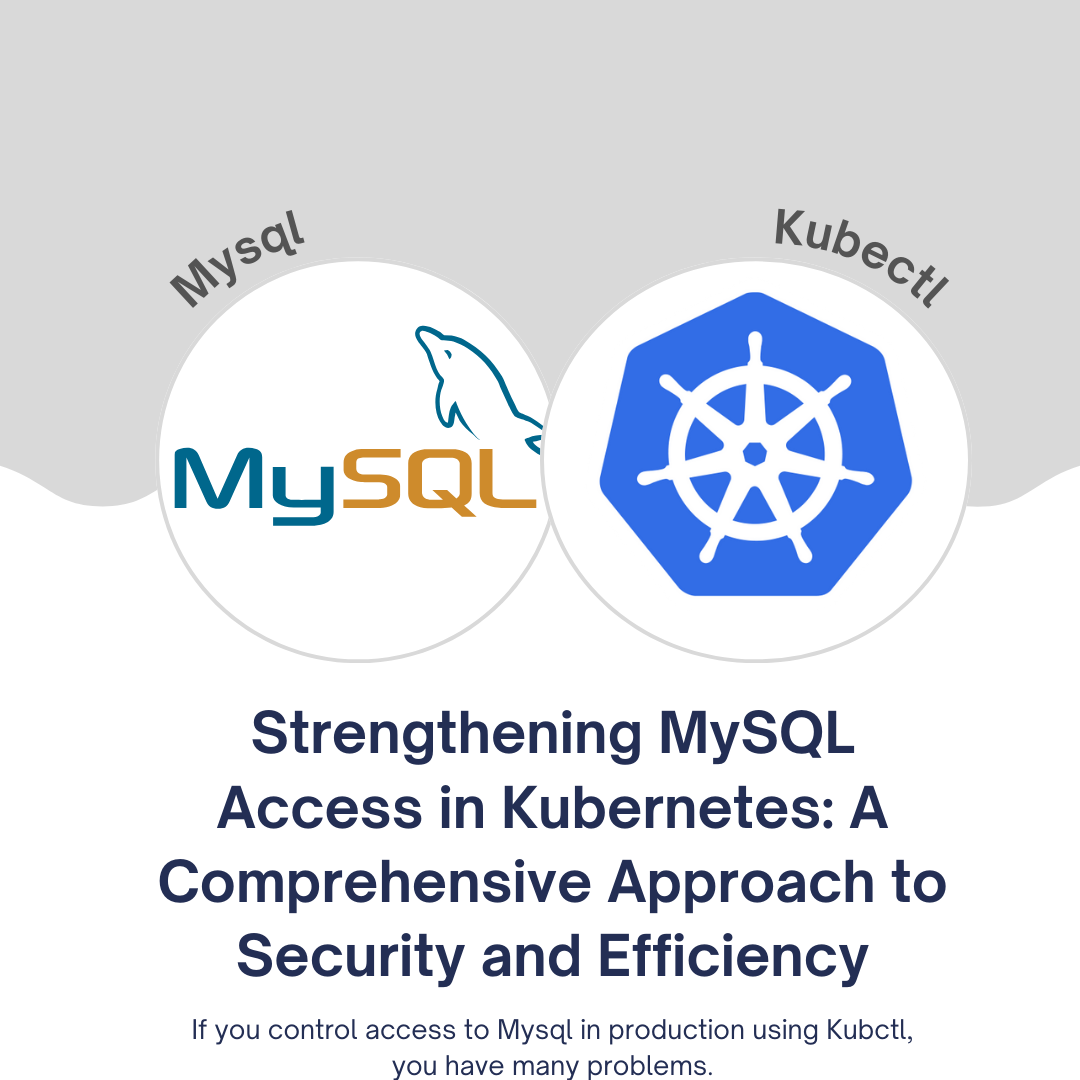Strengthening MySQL Access in Kubernetes: A Comprehensive Approach to Security and Efficiency

Introduction
If you're responsible for managing access to MySQL in a production environment through Kubernetes (kubectl), you're likely aware of the challenges it presents. In this article, we'll delve into the five major issues associated with MySQL kubectl access, explore their implications, and suggest practical solutions to mitigate these problems.
1. Fast and Efficient Access is Critical
In today's fast-paced digital landscape, quick and efficient access to the right engineers in a production environment is crucial for maintaining product speed. The ability to troubleshoot, resolve bugs, and manage incidents hinges on rapid data access. Unfortunately, many organizations employ suboptimal methods to grant access, resulting in either significant security risks or inefficient workflows.
2. Building Infrastructure for MySQL Access Using kubectl
One of the major challenges in managing MySQL access via kubectl is the lack of essential components that should be part of your access management strategy. These hidden vulnerabilities are often overlooked but represent significant attack vectors:
a. Single Sign-On (SSO) & Multi-Factor Authentication (MFA)
Implementing SSO and MFA ensures that only authorized users gain access to MySQL resources, enhancing security significantly.
b. Audit Trials and PII Protection
Audit trials are crucial for tracking who accesses your MySQL database, helping in compliance with regulations like GDPR, PCI, SOC2, and HIPAA. Protecting Personally Identifiable Information (PII) is paramount.
c. Compliance
Different industries have specific compliance requirements. Ensure that your MySQL access strategy aligns with the regulations relevant to your business, such as GDPR, PCI, SOC2, or HIPAA.
d. Developer Experience
Enhancing the developer experience is essential. Accessing MySQL via kubectl often involves a complex and time-consuming workflow, which can be streamlined for efficiency.
3. Implementing Solutions Gradually
To address these vulnerabilities effectively, consider the 80/20 rule and gradually integrate the following features into your MySQL access strategy:
a. Add MySQL to Systems You Already Manage
If you're already using tools like Google Workspaces, you can leverage them for MySQL access, eliminating the need for additional LDAP directories.
b. Prioritize Features According to Industry
Tailor your MySQL access strategy to your industry's specific needs. For less regulated industries, prioritize Developer Experience, SSO, and MFA over audit features. Conversely, highly regulated sectors like fintech should focus on compliance requirements.
c. Leverage Comprehensive Access Management Solutions
Reduce complexity by using tools that handle not only MySQL but also AWS/GCP, other databases, Kubernetes, servers, and more. A unified toolset simplifies access management and reduces the need for multiple specialized solutions.
4. Adding Friction to Unwanted Access Methods
In some cases, it may be necessary to discourage engineers from using insecure or non-compliant access methods. While not ideal, adding friction to these methods can steer users toward more secure practices:
a. Introduce Form Submissions
If the fastest access method lacks essential security features, you can add a form submission step to the process. This makes the previously rapid approach less appealing, as people generally dislike filling out forms. This subtle change can encourage users to opt for the more secure method.
b. Restrict Access Behind Requests
For example, if engineers frequently access resources via the AWS web console instead of using an automated Infrastructure-as-Code (IaC) pipeline, you can make console access more cumbersome by requiring a Jira request. While not a direct revocation of access, this approach nudges teams toward adopting the desired automated approach, which can be improved over time.
Conclusion
Securing MySQL kubectl access is a multifaceted challenge, but by addressing the hidden vulnerabilities within your access management strategy, you can significantly enhance security, compliance, and overall efficiency. Gradually implementing solutions, prioritizing features based on your industry's needs, and leveraging comprehensive access management tools will help you navigate these challenges effectively. Additionally, adding friction to undesirable access methods can steer users toward secure and compliant practices, ultimately bolstering your organization's MySQL security posture.
